One of the many positives of the CUE Haven project is the many interesting people we have met and the wonderful friends we’ve made, and in particular, our neighbours Gill and Kevin Adshead. They have a 1300 hectare (3200 acre) beef and sheep farm, Mataia, just down the road from us and they have set aside 400 ha (990 acres) of coastal native forest, salt marsh and mangrove swamp for conservation.
The Mataia Restoration Project, started in 2005, aims at restoring and enhancing the considerable ecological values of the area. This has been achieved through extensive on-going pest and predator control, re-vegetation planting and the fencing off of bush corridors and riparian margins.
Gill and Kevin have long hoped to reintroduce native New Zealand kiwi birds to the Mataia property. Kiwi have not been seen in the area in over fifty years.
Before humans came to New Zealand, there were no mammals other than a small bat and there were no snakes or carnivorous reptiles. As a result, with no predators to worry about, many native NZ birds, including New Zealand’s national symbol, the kiwi, are flightless. Even native birds that fly often spend a lot of time on the ground and some nest on the ground.
When humans came to NZ and brought dogs, cats, rats and other predators, kiwi and other flightless birds were in serious trouble. Today all species of kiwi are endangered and of the small percentage of wild kiwi eggs that hatch, only 5% of the chicks survive to adulthood. Almost 95% of those killed are killed by stoats and cats. Uncontrolled dogs are also responsible for the deaths of many adult kiwi, particularly in Northland.
As a result, most New Zealanders have never seen a kiwi or heard their amazing calls in the wild. There are a number of kiwi refuges on predator free islands or in reserves where predators are controlled, but a kiwi population cannot be sustained without protection from predators.
Today kiwi are highly protected and releasing them onto private land requires approval and oversight from the Department of Conservation and other conservation groups. In addition to a suitable habitat, a strong predator control programme has to be in place.
Since 2006, Gill and Kevin have undertaken an intensive pest and predator control program to eradicate possums, stoats, ferrets, weasels, cats and rats on the Mataia property. The entire boundary fence has also been covered with shade cloth that will keep the kiwi in and deter most predators, including dogs. Only working farm dogs that have undergone kiwi aversion training are now allowed on the property.
Once all safeguards were in place, Gill and Kevin received approval to release kiwi onto the Mataia property.
The Northland Brown kiwi to be released came from Department of Conservation reserves on Motuora and Matakohe Islands. The Department of Conservation, the Auckland Zoo and a programme known as Kiwis for Kiwis are all involved in hatching monitoring and maintaining the kiwi population on the islands. The kiwis are microchipped and detailed records are maintained on each one. Each kiwi also has a transmitter attached to a leg to enable Gill and Kevin to monitor their movements and activity.
On 25th May an initial five kiwi were released and on 11th June an additional eight were released. As a result, for the first time in over 50 years there are kiwi on private land in the Kaipara Harbour area. More kiwi will be released at Mataia next year.
Kiwi releases are a wonderful event. The pictures below are from the May and June releases. The ceremonies for the June release were held indoors because of the weather.
Kiwi are national treasures and the Maori, New Zealand’s indigenous people, consider kiwi to be taonga, which means ‘treasure,” and under the Treaty of Waitangi between the British Crown and the Maori tribes, Maori have kaitiakitanga (guardianship) of their taonga.
Because the kiwis were being transferred from one Maori tribal area to another, it was necessary for the gifting iwi (tribe) to introduce the kiwis to their new home and for the local iwi that would be receiving the kiwis to formally accept and welcome them. For each release, Maori representatives from the iwis were at Mataia to do the Pôwhiri (formal welcoming ceremonies). For both releases, family, friends, local school groups, local government representatives and the media were also on site.
First the manuhiri (guests) were welcomed by the local kuia (female elder) with a karanga (welcome call) and invited to take a seat from across from where the tangata whenua (local people) sat.
The local iwi kaumatua (elder) then welcomed everyone and gave a speech explaining whakapapa (the genealogy) of the local tribe and the local area. This speech was followed by a speech from the representative of the manuhiri explaining who they were and their background and also a speech by a Department of Conservation representative on behalf of the kiwi sanctuary.
The purpose of these speeches was to help establish the identity of the various groups and demonstrate that they are present for a peaceful purpose.
The local Kaumatua then invited the mahuhiri for the hariru (shaking hands) and hongi (touching noses together). This is a symbol of love and peace because at creation, the breath of life was breathed into the nose.
The Department of Conservation representatives then brought the kiwi in special boxes.
The kiwi were officially gifted with speeches by the kaumatua (iwi elder) after the Department of Conservation representative explained the background of the kiwi and their lineage.
The local school children formally welcomed the kiwi with waiata (special welcoming songs).
The kiwi were then blessed by the local kaumatua and introduced to the community.
CUE Haven is fortunate to have been able to sponsor two of the kiwi monitoring transmitters and as a result, we were able to name the kiwis and to participate in their field release on 11th June. Because CUE stands for ‘Cultivating Understanding and Enlightenment,’ we named the kiwis Mātauranga and Maramatanga – Maori words for Understanding and Enlightenment. Maramatanga is a 1.76 kg female who will be two years old on 20th August. Mātauranga is a big 2.87 kg male who will be nine on 5th November.
Shane, Kevin and Gill’s son in law, and Paul from the Department of Conservation and Tom took Mātauranga and Maramatanga to the bush release site.
Because kiwi are nocturnal, they are kept in dark boxes until their release and then are placed into sealed boxes in the field which serve as temporary burrows. At dusk, the boxes are opened so the kiwi can escape and explore their new home. They will make their own burrows and the boxes will be taken away.
Here is Maramatanga ready to go into her temporary burrow.
Meet Mātauranga, held by Paul from the Department of Conservation. Paul and Shane guided Mātauranga into his temporary abode.
You can track the kiwi at Mataia here.
We can’t thank Kevin and Gill enough for all their efforts and for being such an inspiration for conservation. They have made a major contribution by reversing the effects of years of kiwi habitat destruction. The Mataia kiwis are the closest wild kiwis to Auckland, New Zealand’s largest city and as Mataia’s neighbours cooperate with pest control and native bush restoration, it won’t be long before the population grows and spreads. And we look forward to the day when there will be kiwi roaming freely at CUE Haven too!
The events were covered by the media and you can see the clips here and here,


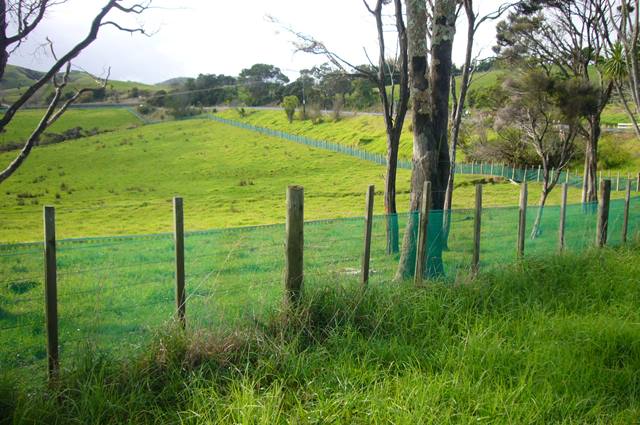
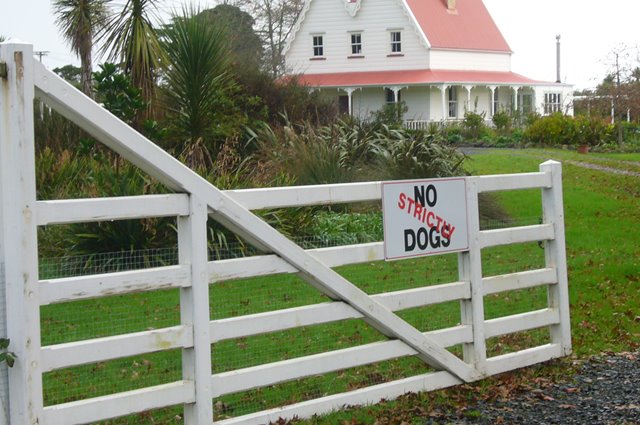



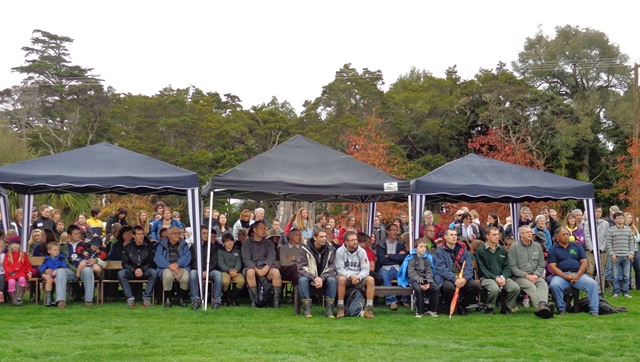
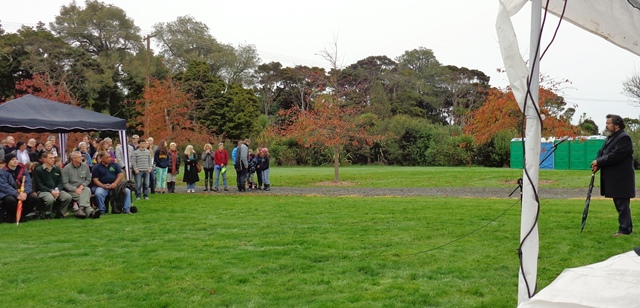


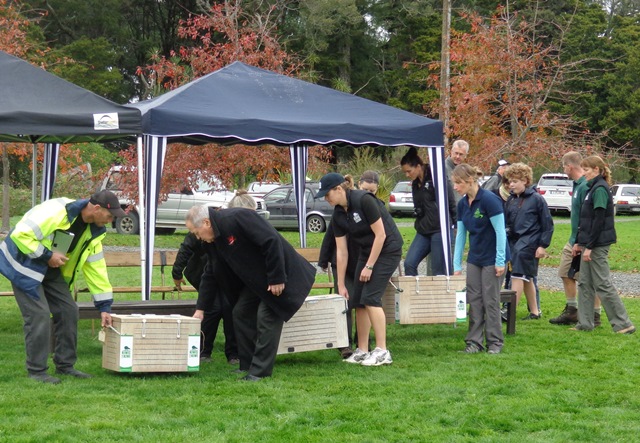


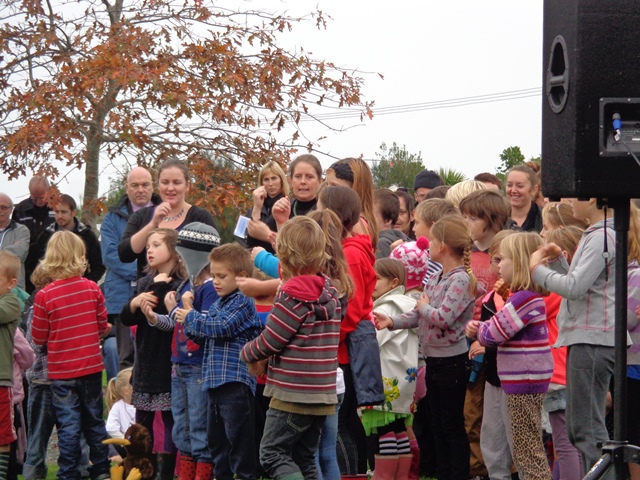
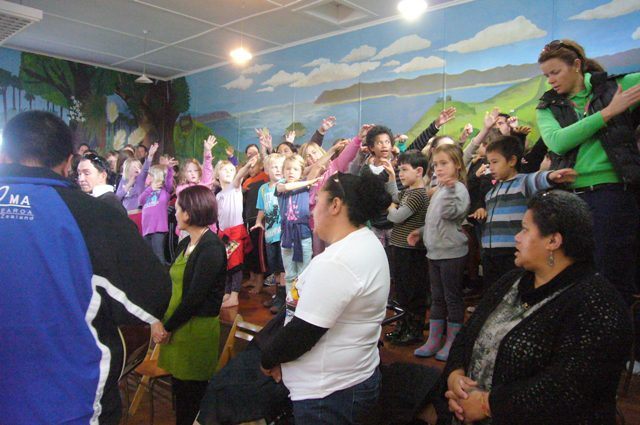










6 responses to “Kiwi Release On The Kaipara—25 May and 11 June 2013”
Thanks for a greaat read
[…] year we met Dr. Amanda Freeman, Director of the SFS Centre for Rainforest Studies, at the kiwi release at our neighbour’s farm, Mataia, and as part of this years’ programme a three day visit to CUE Haven and Mataia was […]
Ae marika, Ka nui te mihi kia koutou te whanau, ma koutou kaha, maia, manawanui ma tatou manu rangatira, te Kiwi. Congratulations and acknowledgements to all those who contributed, in any way, to have the Kiwi returned to the Kaipara. Thank you Mataia, and whanau for your labour of love. It is much appreciated. We hope for all our Kiwi to breed well in the Kaipara and increase numbers immensly, arohanui, na tetahi o nga uri o Ngati Whaatuta (lots of love from a descendant of Ngati Whaatua, na rewana xoxox
Love reading about all the good work done on & surrounding Cue Haven. The re-introduction
of kiwis and the planting of native trees is going to produce a wonderful legacy for our youngsters to inherit. We take our hats off to you tireless workers and volunteers. Maurice & Noeline.
We wish Matauranga and Maramatanga all the best in their new home..Do hope they find the biggest and ” jucy ist” worms on Mataia…Well done Mahrukh and Tom
Tom & Mahrukh, you remain an inspiration to me – what wonderful neighbours and what a truly beautiful experience to have been part of this project. Always in my thoughts, love Gail